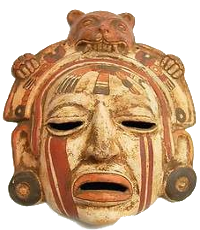Mound-builders of the Mississippi
For the longest time Europeans refused to believe that the enormous mounds they had discovered in the valley of the Mississippi river were constructed by native people. The sheer size of the monuments was just too impressive. The “Indians,” the Europeans had decided, were hunters and gatherers but the people of the Mississippi valley lived in large cities and they grew crops. The construction of the mounds must have required years of dedicated labor. Only a highly organized society could have managed that task. Perhaps it was the Vikings who had built the mounds, or the Chinese, the Greeks or perhaps the ancient Egyptians?
The Europeans should have known better. There were still mound-builders in North America as late as in the eighteenth-century. In 1682 CE, French explorers visited the Natchez, a tribe living in the lower Mississippi. They were astonished to be greeted by their leader, known as the “Great Sun,” who lived in a large house on the top of a platform mound. The Great Sun was treated as a living god by his people and was carried in a litter wherever he went. His mother, known as “White Woman,” was his principal adviser and lived in a house on top of another mound. Ordinary members of Natchez society grew corn, beans, squash and tobacco. The Green Corn ceremony was the apex of their annual cycle of religious events. The Natchez were defeated in a war with French settlers in the 1730s. As a result some were sold into slavery in the Caribbean while others were forced to take refuge with other tribes. Today there is still a Natchez nation with some 6,000 members. It is led by a chief, still known as “Great Sun,” and by four “Clan Mothers.” The last fluent speaker of the Natchez language died in 1957. Today the Natchez are trying to revive their language.
External links:
- Cahokia Mounds Home Page
- François-René Chateaubriand, Les Natchez, 1831
- Gordon M. Sayre, “Plotting the Natchez Massacre: Le Page du Pratz, Dumont de Montigny, Chateaubriand.” Early American Literature 37:3 (Fall 2002): 381–413.
- H.M. Brackenridge, Views of Louisiana; together with a Journal of a voyage up the Missouri River, in 1811
- John Reed Swanton, “Indian tribes of the lower Mississippi Valley and adjacent coast of the Gulf of Mexico,” 1911
- Le Page du Pratz, “The history of Louisiana, or of the western parts of Virginia and Carolina,” 1775
- Mary Rosamund Haas’ Paper, “Natchez”
- Natchez dictionary
- University of Arkansas, “Natchez Indians”
- What Doomed the Great City of Cahokia? Not Ecological Hubris, Study Says


